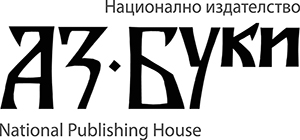Lukáš Stárek, Jarmila Klugerová
Czech University of Life Sciences Prague –
Institute of Education and Communication (Czech Republic)
https://doi.org/10.53656/ped2025-2.07
Abstract. In last decade the Czech’s education have undercome significant changes. The information and communication technologies have crucial role in everyone’s life. Therefore, in education they have its place as well. The information and communication technologies support schools and their systems on many levels such as education, school management, and communication. Education of children with mental disability is life-long process. However, it is also the best possible form of therapy, socialisation, and inclusion into society. During education is crucial to use specialised didactics’ methods and tools to meet pupils’ individual needs. The information and communication technologies have significant role within school life. Plus, the information and communication technologies are part of schools’ educational plan. This article aims to highlight the information and communication technologies in education of and pupils with mental disability. Further, it will identify adequate technologies for the process, plus it will open several questions related to the topic. For example, the topic of inclusivity within specialised teachers’ competencies.
Keywords: competencies; inclusion; information and communication technologies; mental disability; modern technologies; pupils
Log in to read the full text

